How to protect plants from winter: keep your flowers, shrubs and trees sheltered from turbulent weather
If you're wondering how to protect plants from winter, then look no further – these handy tips will help to keep them safe and sound in cold weather
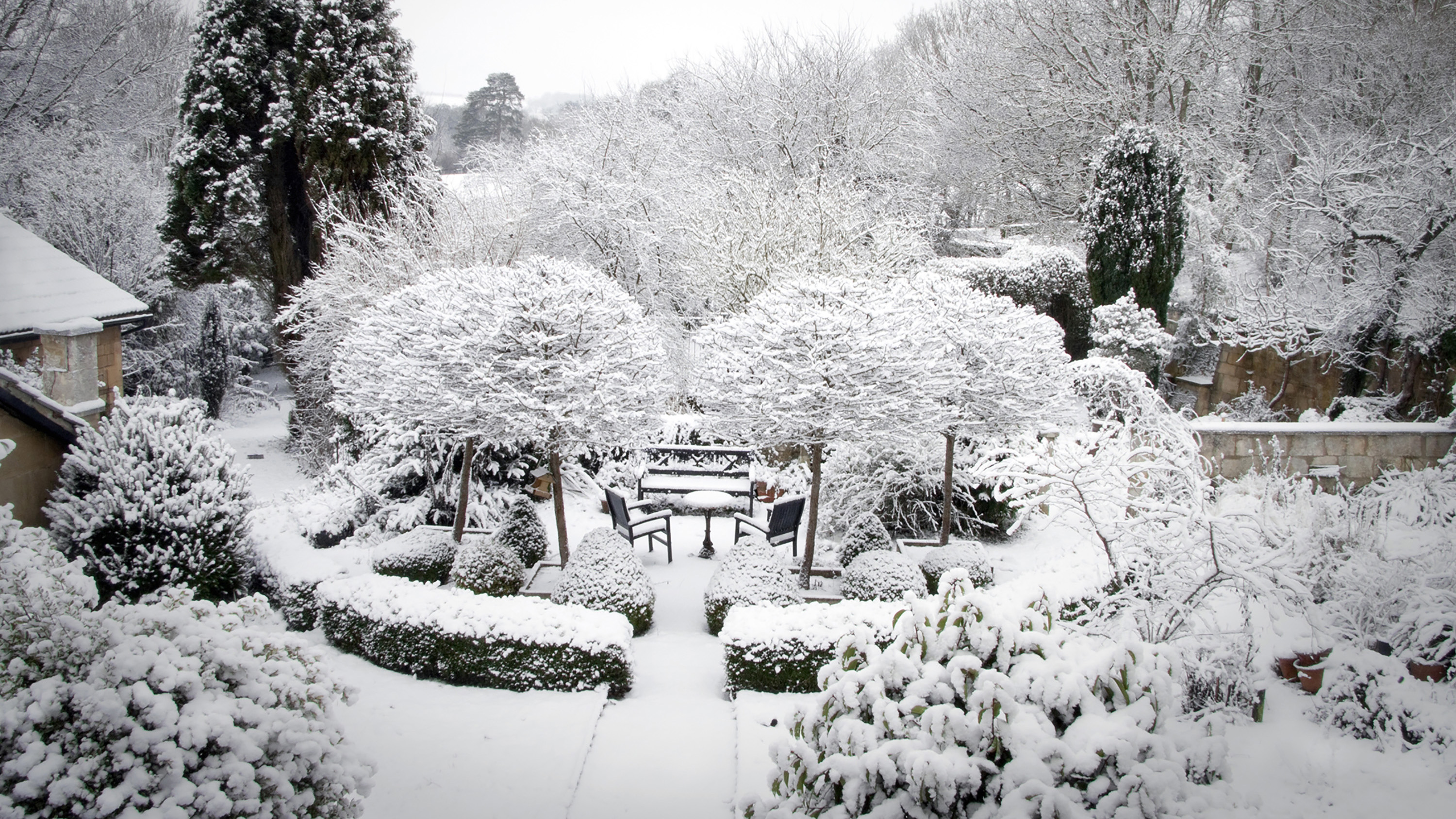

The cold and blustery weather may have you wondering how to protect plants from winter. From the safety of indoors it can be an anxious sight to see well-loved shrubs buckle precariously in tireless winds, winter cabbages thrashed with hail, or pansies covered deeply in snow.
We all know that gardens needn't be abandoned throughout the coldest season, just take a look at our stunning winter garden ideas for inspiration. 'Whether you have a large garden or a small balcony, doing some tasks in January will give you a head start to enjoying your garden in early spring,' says Stephen Pitcher, Director of Trading for Garden at Homebase.
However, there's more you can do besides planting bulbs and the like, to ensure your garden bounces back with triumph. Giving your garden the shelter and protection it needs against the elements is key to keeping it looking its best. And, whilst some plants are hardier than others, it's good to know which ones need a bit more of a helping hand, and how to give it to them.
So read on to find out how to protect your plants this winter, so you can then enjoy them at their best when the milder weather returns. Plus, make sure you check out our winter garden jobs for other ways you could be cracking on in preparation for the warmer months ahead.
1. Make the most of your greenhouse
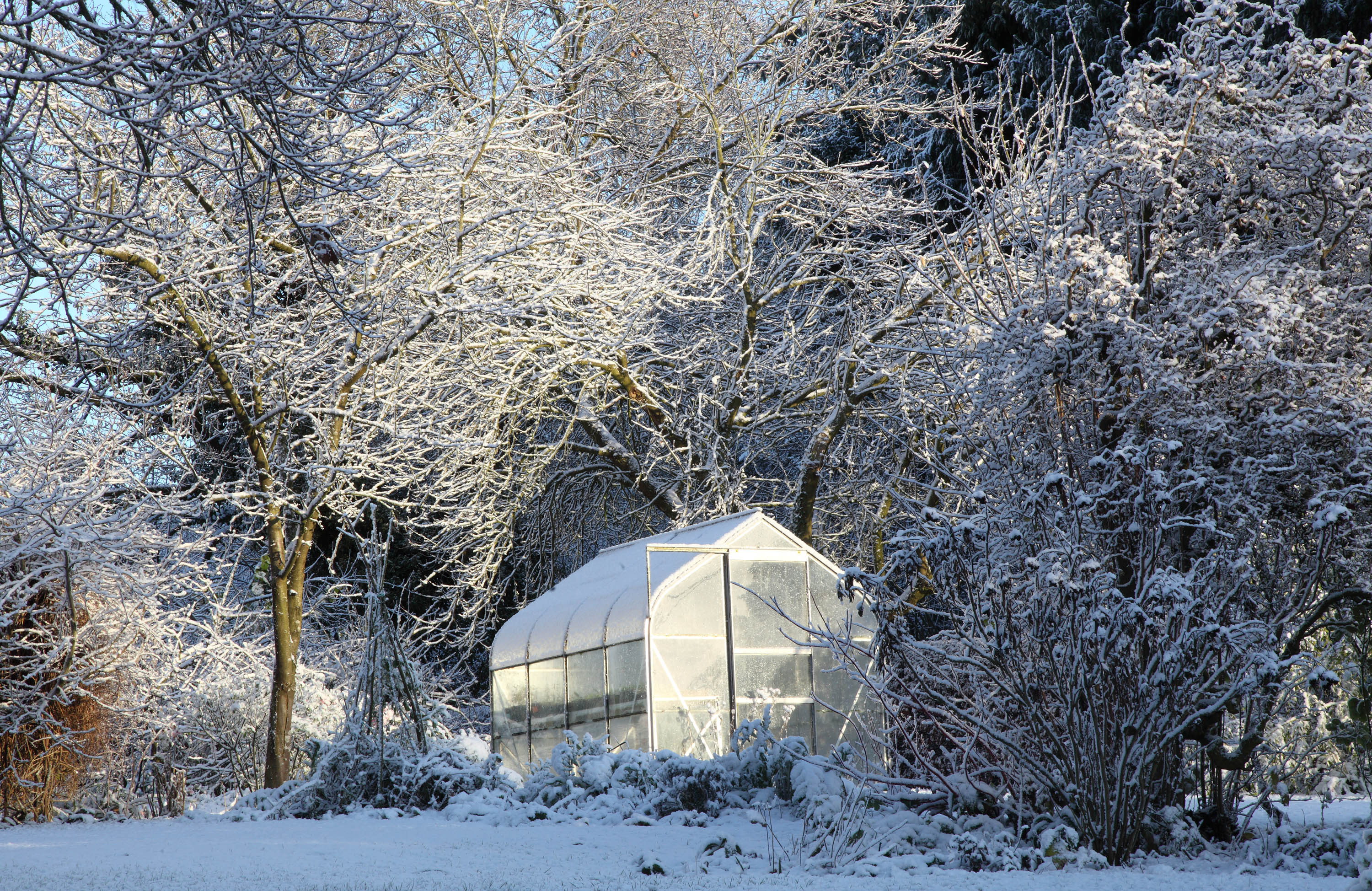
A greenhouse offers protection for plants
If your garden has a greenhouse, it can be very handy in winter. They offer a safe place for winter veg, herbs and tender perennials, away from harsh weather conditions. You can also use them to sow hardy seeds such as celeriac, onions and peas, as suggested by the RHS, for planting out when temperatures rise. The team at Homebase suggests using an electric propagator for better seed germination.
Homebase also recommends to 'keep your potato planters inside, as frosts will kill the foliage.' They also suggest planting amaryllis bulbs in pots, which will offer beautiful flowers for indoors come spring.
Greenhouses can still get cold, and even frosty, on very harsh nights. If this is the case, you may want to think about providing extra insulation for your plants, such as bubble wrap, straw, or fleece.
You can also provide an electric or solar-powered heat source. But, ensure that a fan is also used to circulate the warm air and that any water is kept well away. Remember to brush any snow off of the greenhouse's exterior, too, to protect the glass.
2. Move tender plants and alpines to a cold frame

Foxmore Raised Cold Frame from Garden Trading
Not everyone has the space for a greenhouse, and that's where cold frames come in handy. They are great all year round – for growing tomatoes and other tender crops in summer, for protecting young plants in autumn – but are also useful in winter.
The RHS suggests using a cold frame to protect alpine plants over the colder months, to stop the rain from rotting them. They also say you can use one to shelter annuals and young plants if needs be. A layer of bubble wrap can help to keep it insulated on really frosty nights, but do remember to prop the lid open on warmer days to reduce overheating and allow for ventilation.
Keep an eye out for cold frames with space for storage below, as this can come in handy for watering cans and other garden accessories.
3. Try glass cloches in your vegetable beds
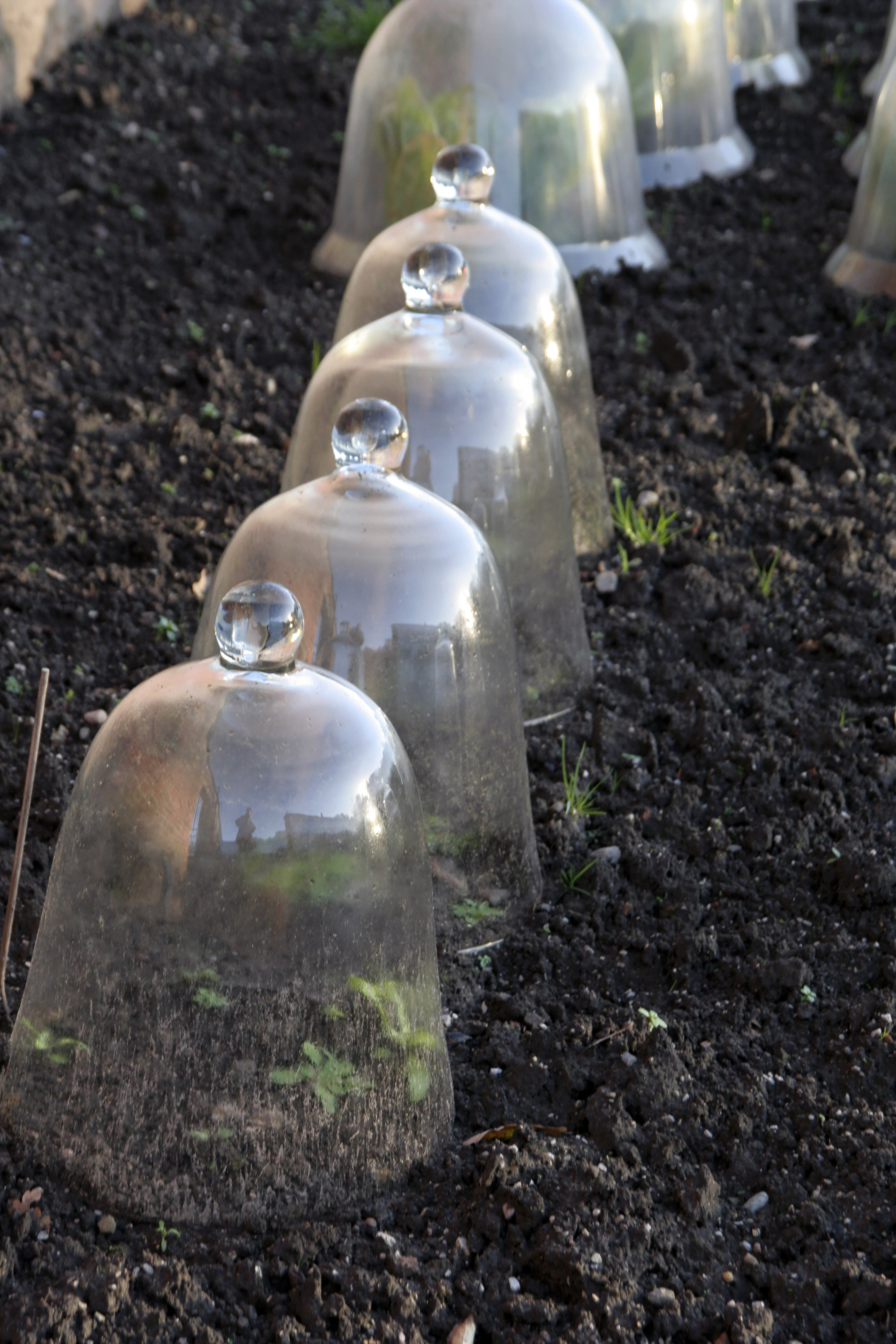
Use cloches to protect individual plants
A cloche is traditionally made of glass, but these days you can find sturdy plastic ones for sale, too. Smaller than a cold frame and therefore easy to move where needed, these bell-shaped domes are used to protect plants from frost, hail, snow, and heavy rain and wind.
They are ideal for overwintering crops and seedlings such as broad beans and leafy greens. Often they come with small holes in the top for ventilation, but if not, will need propping up from time to time with a small stone.
If you're interested in adding interest to your winter veg bed, take a look at our ideas for ornamental winter vegetables.
4. Care for your lawn
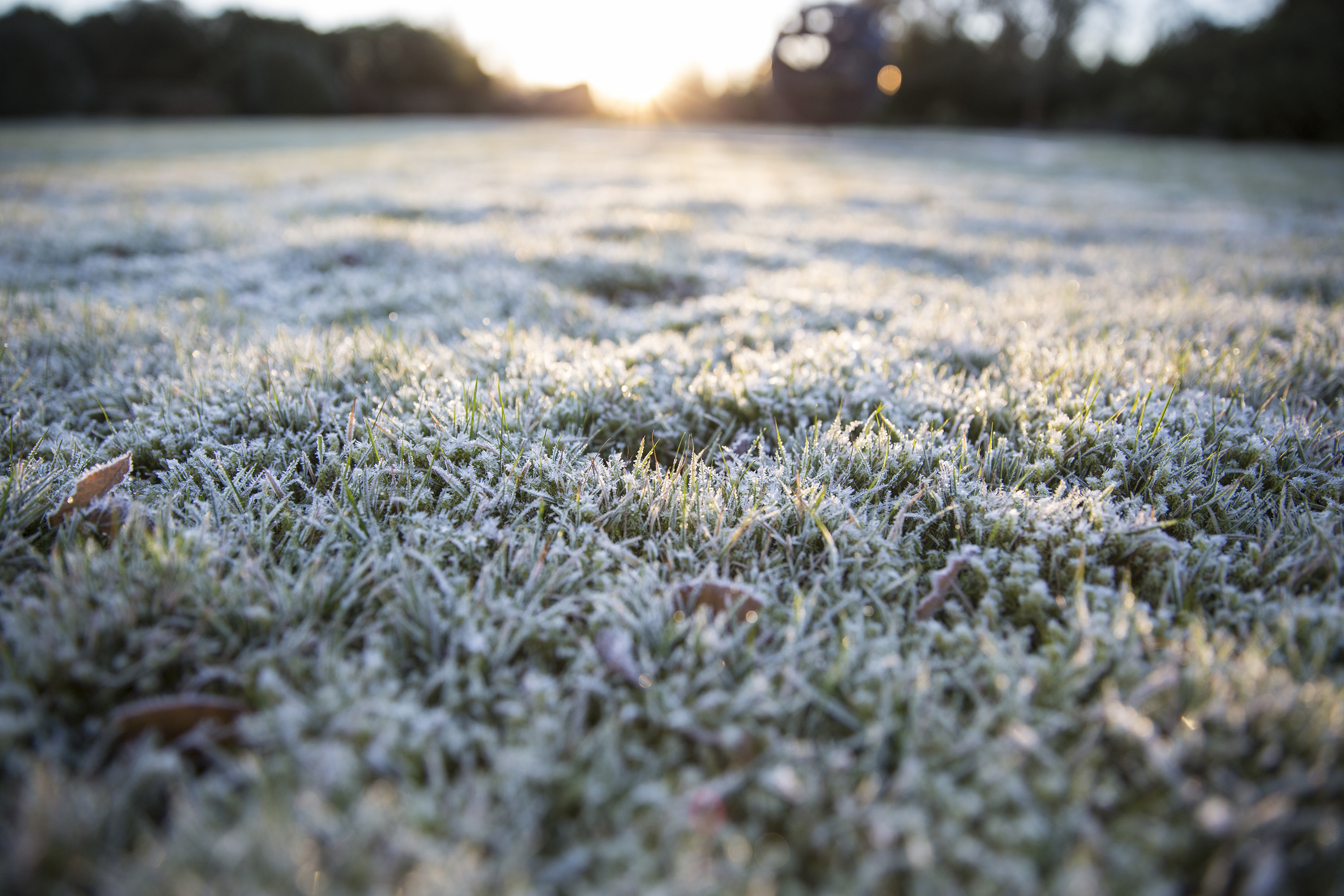
Avoid walking on a frosty lawn
Lawns can withstand frost and snow, as long as you avoid walking on them, advises the team at Homebase. This is because each blade of grass will freeze, making it brittle and easily damaged underfoot.
In terms of rain and stormy conditions, 'it's a good idea to fork your lawn, as this will aerate it,' says the team at Dobbies. 'This essentially improves draining and opens up soil that may be compacted, so that moisture and oxygen can reach the grass roots.'
'You can also dress lawns with a scattering of lawn sand. This will help with drainage for lawns growing on heavy soil and improve the general health of grass, keeping it green and moss free.'
5. Brush snow from branches and give them a prune
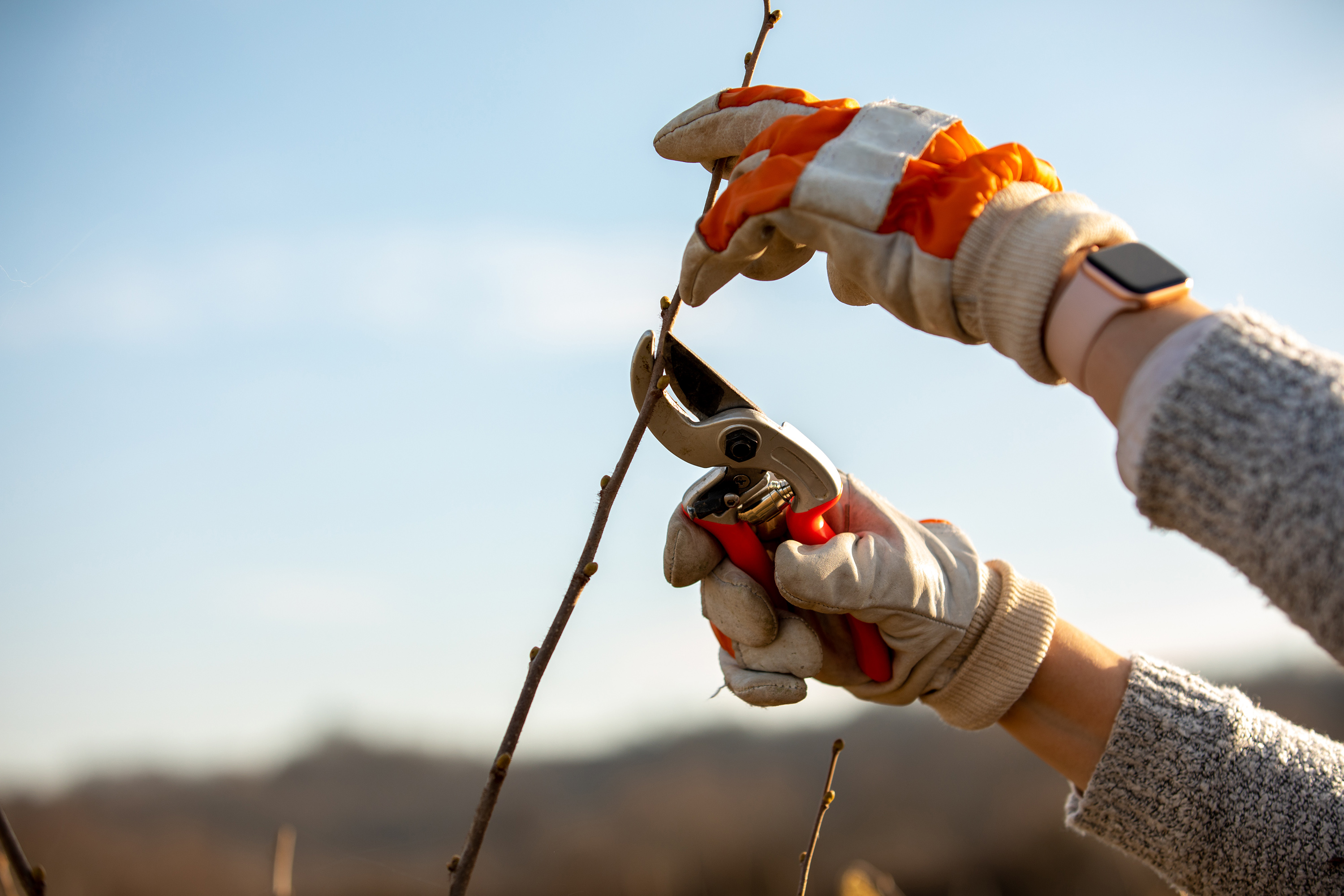
Pruning helps to prevent disease
'In the event of heavy snowfall, use a broom to gently brush off conifers, topiary and evergreen shrubs, helping to prevent damage under the extra weight,' advises the team at Dobbies.
'On frost-free days, take the opportunity to prune deciduous trees and shrubs to maintain their shape,' they add. But it's not just the shape that will benefit from a few snips with your best secateurs.
'Pruning will encourage more fruit and flowering as well as remove diseased wood,' says Sarah Squire, Chairman of Squire's Garden Centres. 'It’s easy to shape shrubs and trees when the stems are bare.' Take a look at our guide to pruning shrubs for advice on how to do so.
Sarah also says that cutting back roses helps to prevent wind-rock, which is where heavy gales loosen their roots in the ground, weakening the plant. This is the case with lots of other top-heavy plants too, including dogwoods and buddleja.
6. Wrap trees and pots in fleece
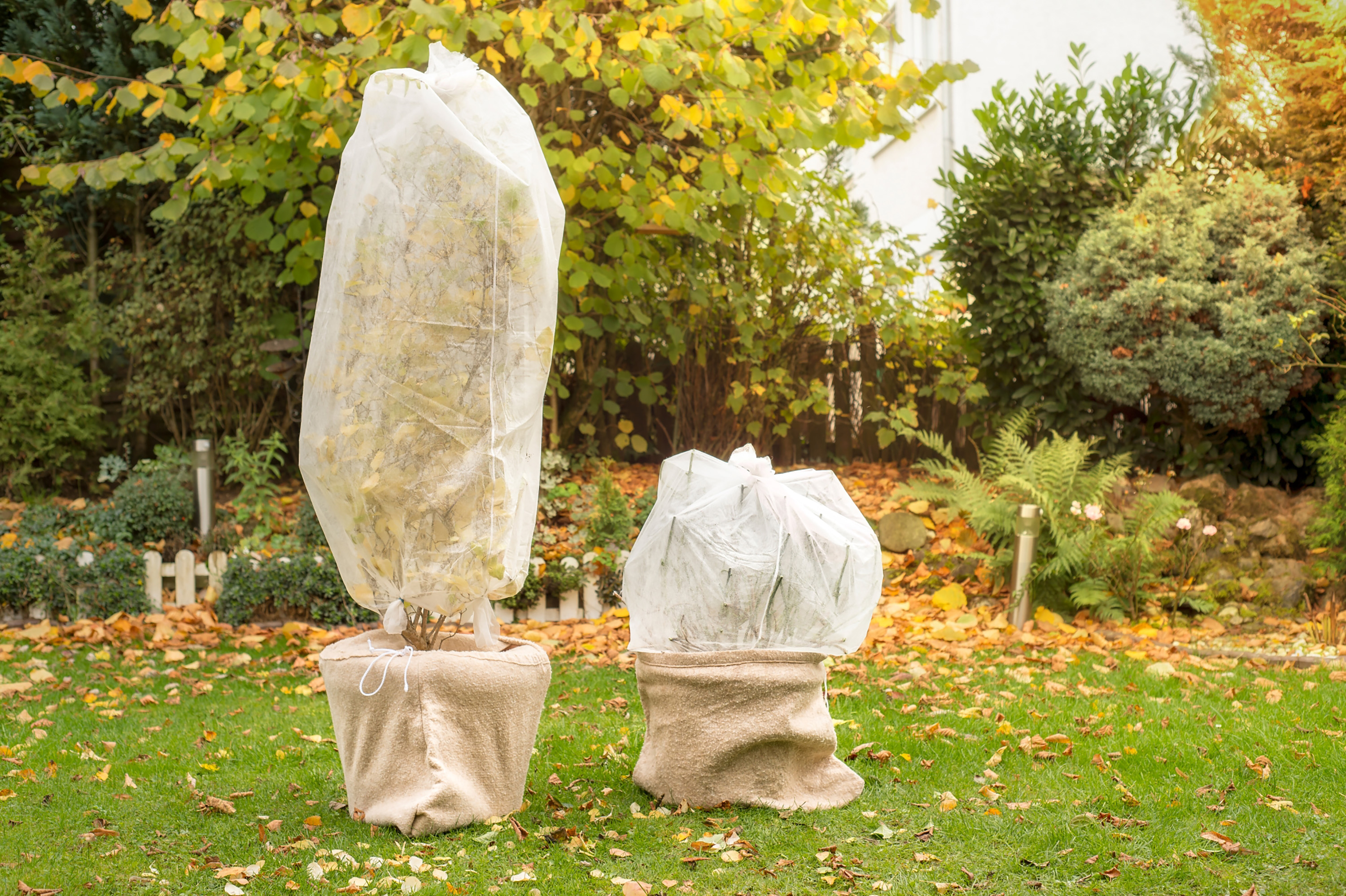
Provide shelter for your potted trees
'Wet, cold compost can cause the roots to rot. So, ensure that your pots have drainage holes in the bottom and stand them on pot feet, so that any excess water drains away,' says Sarah Squires of Squire's Garden Centres.
It's also a good idea to protect pots from frost, which 'can penetrate the sides of pots and kill off roots, especially those made out of terracotta,' adds Sarah. 'Wrap containers with fleece, and push them against the house wall where it is warmer, or move them inside.'
Whilst fruit trees are generally hardy, they become more vulnerable in late winter, when signs of blossom and new buds begin to show. You can protect them by wrapping them in fleece when frosty nights are forecasted.
In milder climates, you can also provide protection to flowering fruit trees with a good layer of mulch such as well-rotted manure or compost, which will help to generate heat. 'Take care not to mound mulch up around the trunk,' adds the team at Homebase.
7. Use straw to protect banana plants
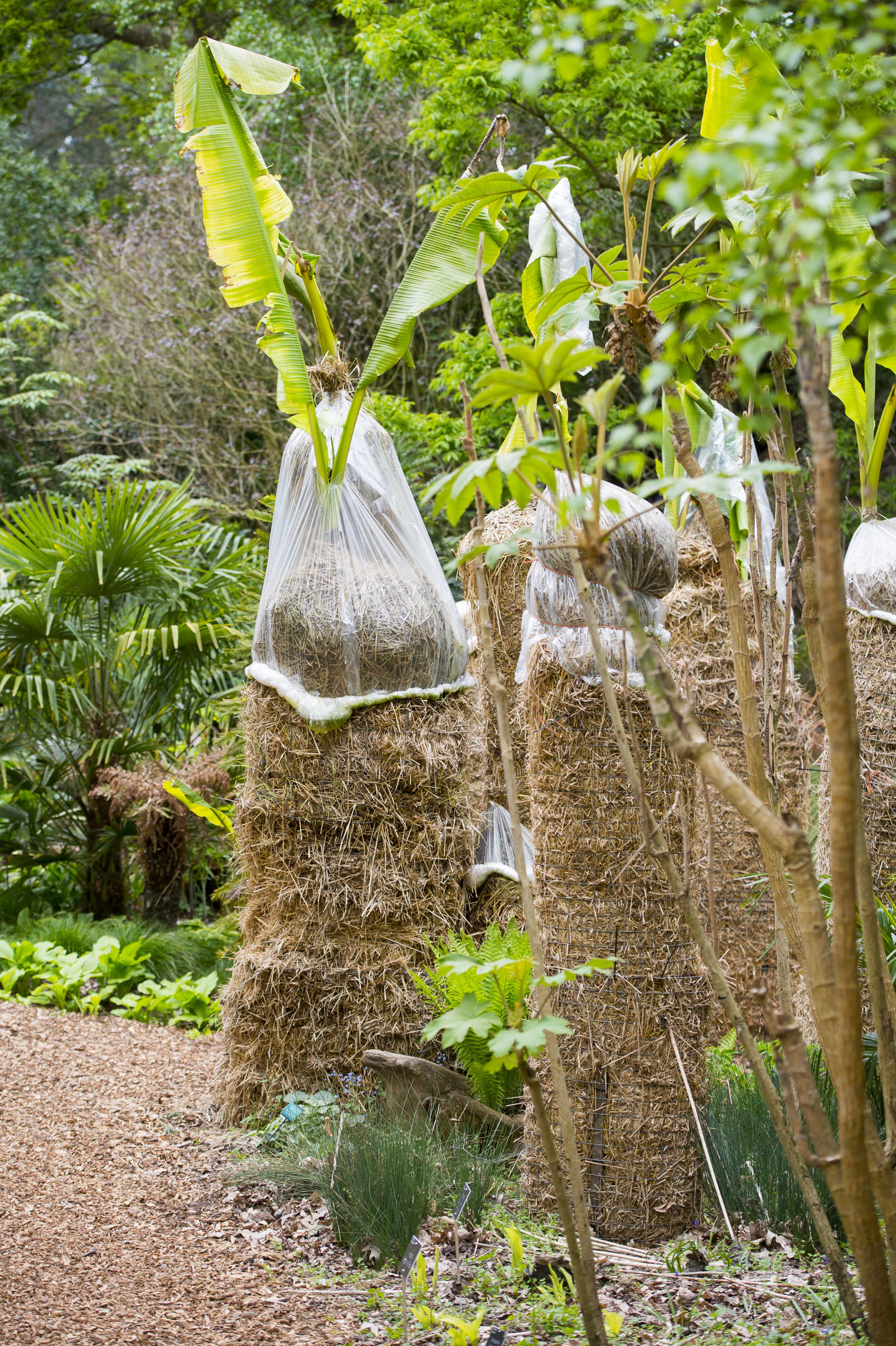
More exotic plants will need greater protection against frost
You may have seen Monty Don protect his banana plants over winter on Gardeners' World. If you, too, have one of these impressive plants, then it's very important to shelter it appropriately against frost.
The Gardeners' World team suggest to cut away any lacklustre leaves and then loosely wrap the banana plant in chicken wire, or rush screening. In between this and the plant, add handfuls of dry straw to create an insulating layer. Tie the structure together using string. You can then cover again using fleece for added protection, or even old compost bags which will help to keep them dry. Then store them safely undercover until spring.
As Monty Don demonstrates, tender, Abyssinian varieties will need a slightly different approach. Trim back and dig up the plants, before transferring them into large pots or grow-bags with compost and leaf mould. Keep them in a greenhouse or tool shed until it is safely warm outdoors again. Find out how to make leaf mould with our simple guide.
8. Protect winter crops with fleece covers

Use long sheets of horticultural fleece to protect rows of plants
Horticultural fleece is an inexpensive yet effective way to protect raised beds or vegetable patches from frost and harsh wind. It also helps to warm up the soil beneath, says Sarah Squires from Squire's Garden Centres.
Although perhaps not as pretty as a glass cloche or smart cold frame, it benefits from letting light, ventilation and rain water through, without the fuss of periodically propping up for air circulation. You can help to keep it in place using bricks, or pegs bought from a garden centre.
9. Bring potted plants indoors
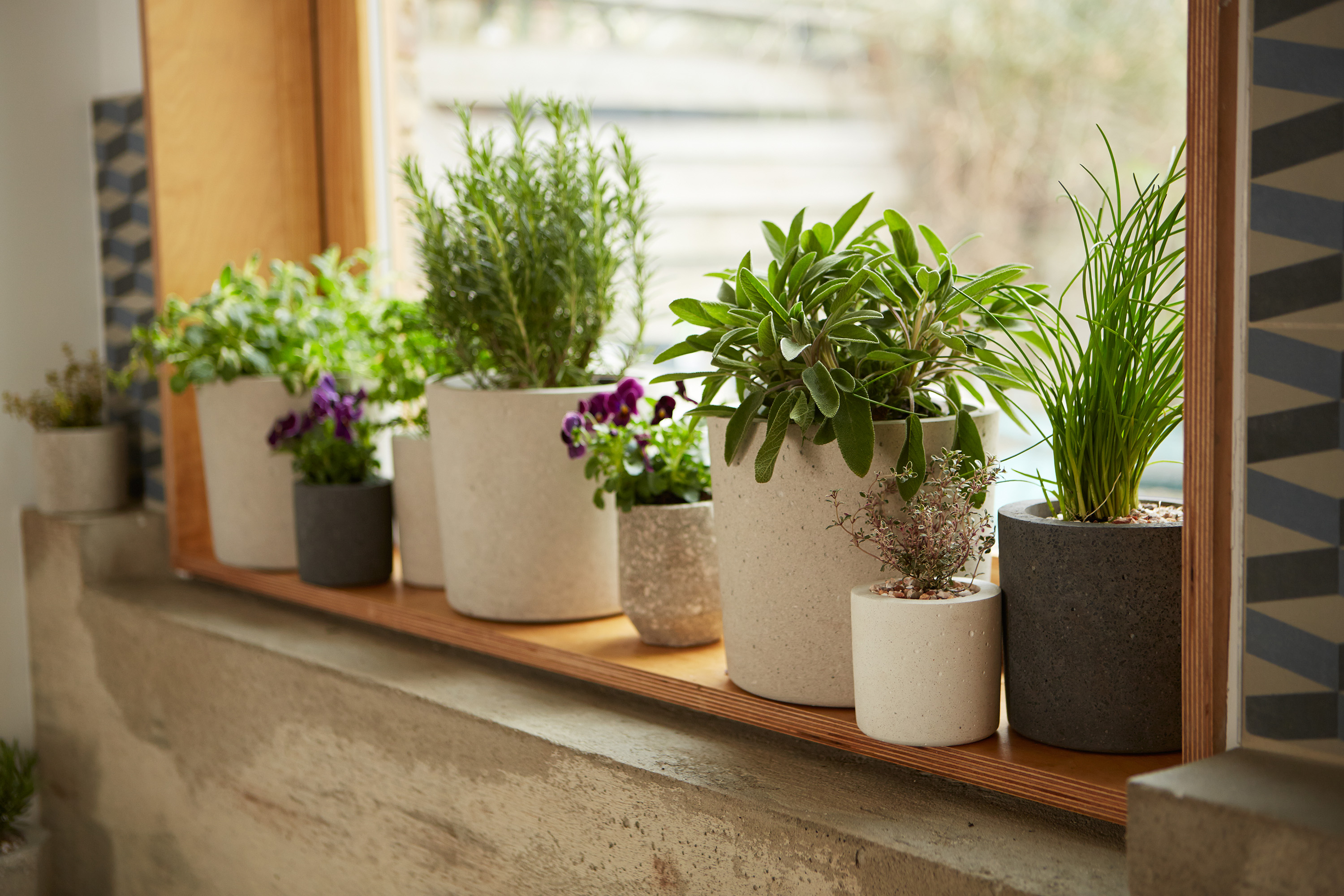
Some plants are better off coming inside for the winter
With some potted plants, it is often much more practical to simply bring them inside. Geraniums, pelargoniums, passion flowers, and fuchsias, which may have provided vibrant colour on your summer patio, will be thankful for a winter spent indoors. You may even get some extra blooms, too.
Pots of Mediterranean herbs such as oregano, thyme, and rosemary can come indoors too. Not so much for protective reasons, but more for practical ones – as they will make a welcome addition to the kitchen over winter.
What potted plants can survive winter?
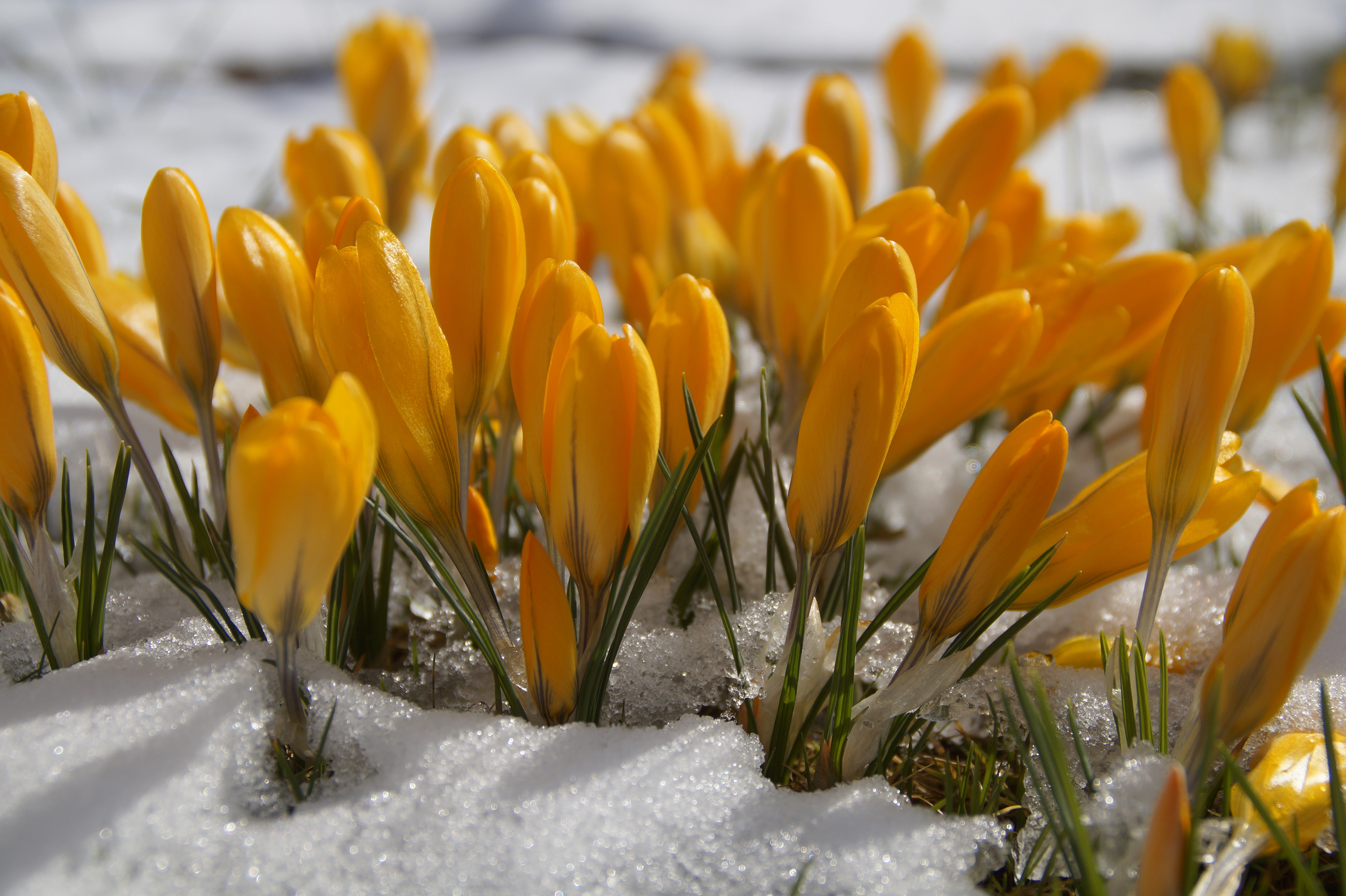
Crocuses will bloom even through snow
There are plenty of plants that will survive winter's harsh weather and bring colour and joy to your garden. Winter pansies, cyclamen, winter-flowering heather, hellebores, crocuses, snowdrops, skimmia, heuchera, and many others should all be just fine left outside, unless weather conditions become exceptionally severe.
You can use some of the above to create a beautiful container to add interest to your winter patio. Take a look at our guide on how to plant a winter container to get started.
Although they won't flower until temperatures rise, Siberian irises, most echinaceas, nepeta, lavender, and sedum are also happy staying outdoors in cold weathers.
At what temperature do I need to cover my plants?

A snow-filled garden, although beautiful, may damage less hardy plants
Frost will occur when temperatures reach below freezing (zero degrees Celsius), and this can quickly damage the cells of some plants. You might just get away with one light frost, but it's generally not worth the risk. As the RHS advise, a repeated freeze and thaw can be especially damaging.
So, keep an eye on the weather forecast and be sure to put protection in place before a cold snap. You can follow our advice on how to protect plants from frost for more info.
Watch out for wind scorch, too. This is causes foliage to turn brown and is more common in exposed gardens during winter when soil is dry or frozen. The RHS suggest to provide shelter using a windbreak, a hedge, or a wall of the house, and remember to mulch to help plants retain their moisture.
Read more:
- The best plants for winter pots: create stunning seasonal containers
- Add interest with the best plants for winter colour
- Architectural plants for winter gardens: striking choices for every space

The garden was always a big part of Holly's life growing up, as was the surrounding New Forest where she lived. Her appreciation for the great outdoors has only grown since then. She's been an allotment keeper, a professional gardener, and a botanical illustrator – plants are her passion.
